At first glance, Jasper and ChatGPT seem similar—they’re both generative AI tools that can create content in a split second. But there’s a big difference here: ChatGPT is an AI chatbot that’s flexible enough to handle just about any task you throw at it, while Jasper is a specialized AI marketing tool.
I’ve spent countless hours using both apps in my personal and professional life. For example, I used Jasper to help me scale content production for my previously niche website. And I’ve been using ChatGPT to take care of other time-consuming tasks in my work.
There have been major upgrades to both apps since I first started using them, so I dug into each one again to see how their features stack up. Here’s what I discovered when I compared Jasper AI vs. ChatGPT.
Jasper AI vs. ChatGPT at a glance
If you want a quick breakdown of both tools, here are my observations:
-
ChatGPT is more versatile and better for generalized AI assistance.
-
Jasper is built for marketing teams and is better for creating marketing content.
-
You’ll get more out of ChatGPT if you already know how to write an effective prompt; Jasper provides prompt assistance along the way.
|
Jasper |
ChatGPT |
|
|---|---|---|
|
Ideal user |
Marketing teams looking to generate, refine, and improve marketing materials |
Users looking for an AI assistant to handle complex or time-consuming tasks of any nature |
|
Models |
⭐⭐⭐⭐⭐ Powered by Jasper’s proprietary model and other AI models, including OpenAI’s GPT models |
⭐⭐⭐⭐ Uses only OpenAI’s GPT |
|
User experience |
⭐⭐⭐⭐ Easy to use once, but has lots of options and features, so it can be confusing initially |
⭐⭐⭐⭐⭐ Super easy to use with a chat-style interface for interactive content generation |
|
SEO capabilities |
⭐⭐⭐⭐⭐ Offers SEO content templates and connects with Surfer SEO for content optimization |
⭐⭐⭐ Can optimize content based on specific prompts but isn’t as seamless as Jasper |
|
Integrations |
⭐⭐⭐⭐⭐ Integrates with third-party marketing tools, including Zapier |
⭐⭐⭐⭐⭐ Supports custom GPTs and integrations with Zapier |
|
Pricing |
⭐⭐⭐ No free plan and quite expensive for small businesses |
⭐⭐⭐⭐⭐ Free plan available; paid plans start at $20/month |
Both use GPT, but Jasper leverages a few other AI models
ChatGPT and Jasper are both powered by OpenAI’s GPT. But Jasper goes further by pulling in the power of other LLMs (large language models), too, like the ones from Google, Anthropic, Cohere, and its own proprietary model. Jasper’s AI engine then decides the best combination of models to use for each prompt, which, in theory, should deliver higher-quality outputs. When I tested each app, however, I didn’t experience any significant difference in content quality.
Until recently, GPT included only LLMs, but with OpenAI’s release of GPT-4o, it now includes LMMs (large multimodal models), too. As of this writing, access to GPT-4o is still rolling out to ChatGPT users while Jasper is working to bring GPT-4o to its users.
Another advantage of Jasper’s interoperability—the ability to run on multiple models—is that it gives the software more uptime. If one model goes down, it can easily switch to another. Given that ChatGPT’s been known to experience occasional outages due to high traffic (especially when they release new features), the uptime alone could be a deciding factor for you.
ChatGPT is more intuitive to use; Jasper offers more guidance
When it comes to ease of use, there’s no question about it: ChatGPT is more user-friendly than Jasper.
Once you log in to ChatGPT, you’re met with a clean, intuitive interface—one with limited bells and whistles to navigate through. Get started by clicking one of their seemingly random yet oddly specific prompt templates—for example, “Fun fact about the Roman Empire” or “Make me a personal webpage”—or by entering your own prompt. That’s it.
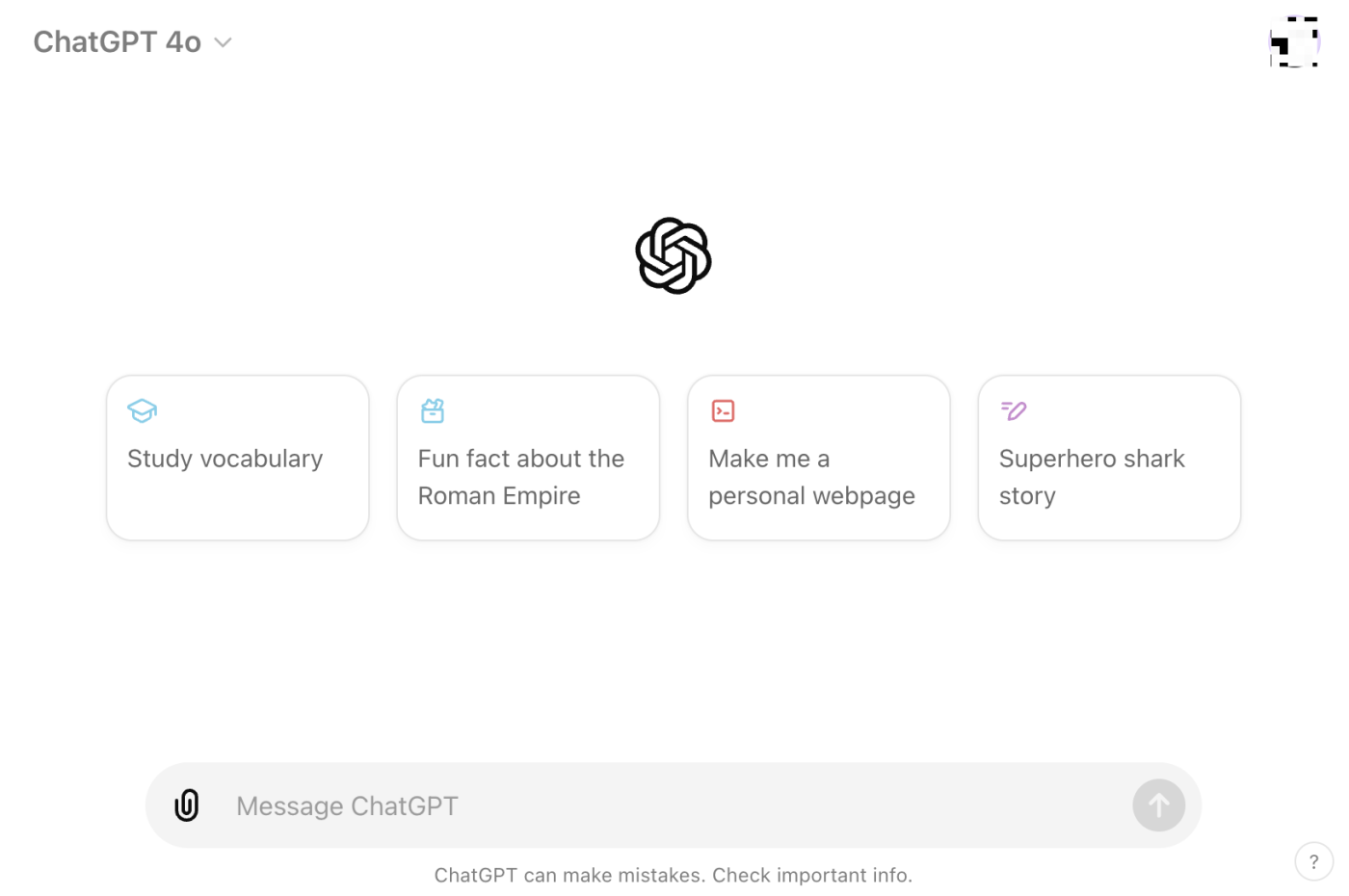
Jasper, in contrast, has a busier interface. And you can’t dive immediately into prompt-and-response the way you can in ChatGPT. There are two main ways to start creating content in Jasper: content templates and chat.
Content templates
You can start generating content by choosing from over 50 content templates that run the marketing gamut—from email campaigns to product descriptions to blog articles. The templates are thoughtfully designed, too. For example, there are ones that are built on top of marketing models like Attention Interest Desire Action (AIDA), Before-After-Bridge (BAB), and Problem Agitation Solution (PAS) to speed up the content creation process and ensure you get targeted outputs.
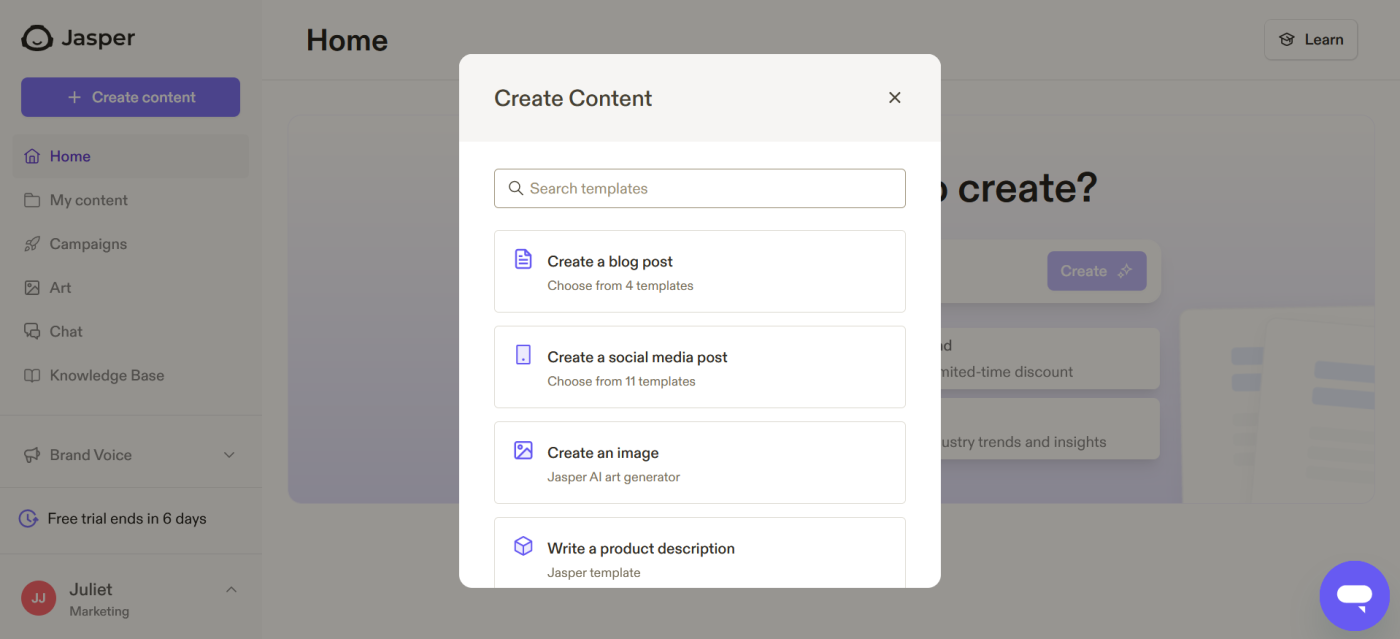
Jasper will then prompt you to provide more details based on the desired content. For example, if you want to write a blog post, you’ll enter the topic, audience, key points, and a CTA.
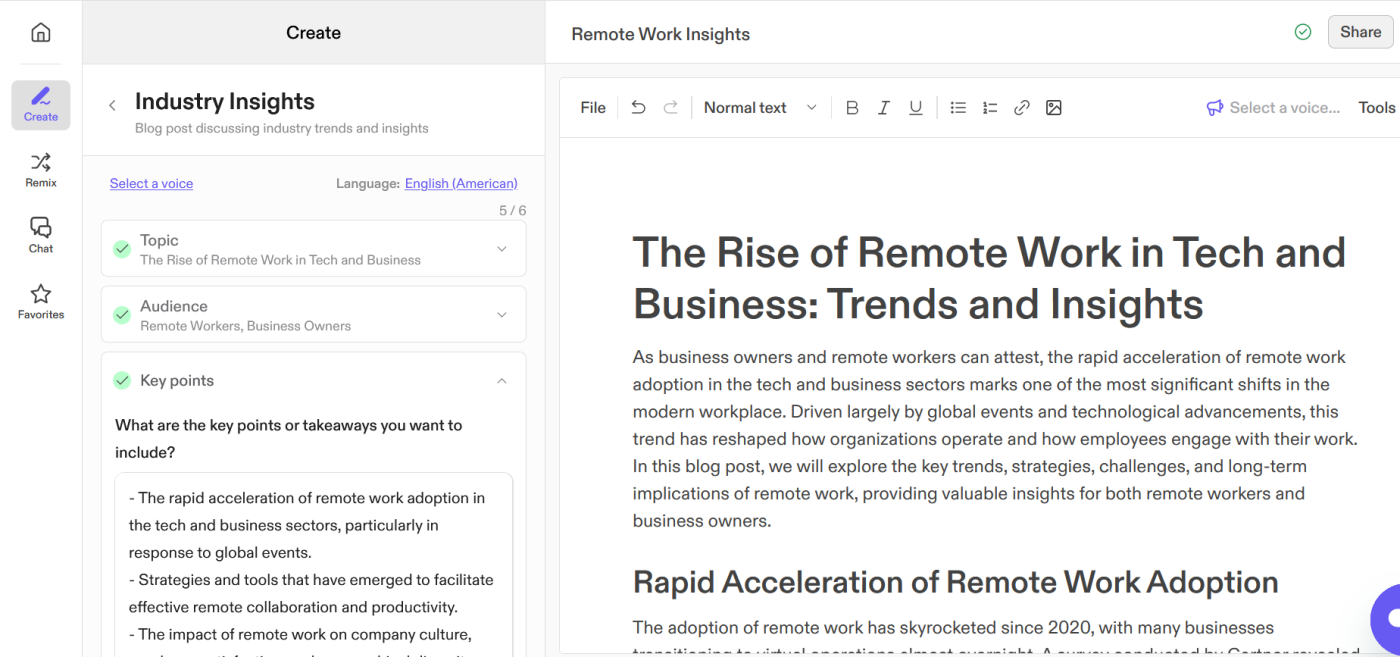
Chat
Jasper also provides a chat-based interface like ChatGPT for interactive content generation. Unlike ChatGPT, though, it also provides additional support to help you write a strong prompt. There’s the Enhance prompt button that helps with refining your prompt and providing additional context.
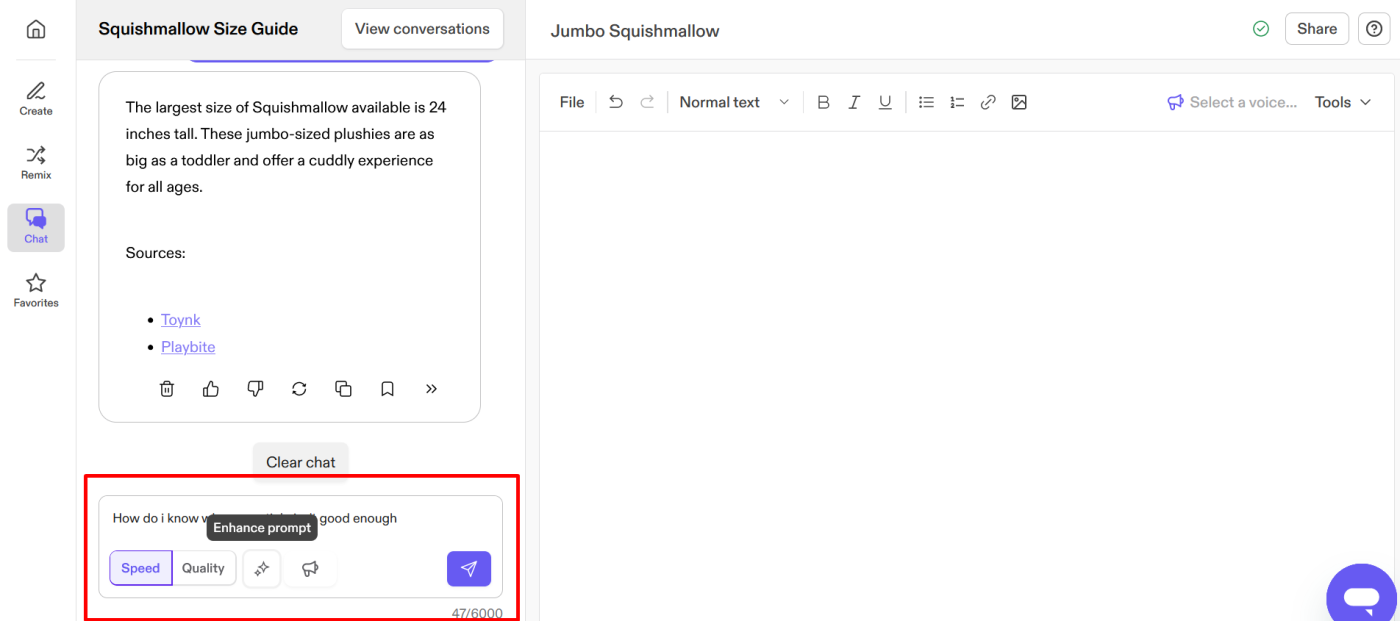
There’s also Jasper’s prompt library that’s filled with over 500 content generation prompts, grouped by use case. All you have to do is copy and paste the prompt into your Jasper chat or a blank document to speed up the process.
At the end of the day, both apps require some level of prompt engineering. And it may take some trial and error to get the content up to snuff. If you have less experience writing effective prompts, Jasper’s step-by-step assistance may be a welcomed addition. But if you’ve got your prompting down to a science, ChatGPT offers a faster way to get to the final results.
ChatGPT offers more customization features
Jasper and ChatGPT allow you to customize the AI so that it can tailor its outputs to suit your needs. But if you’re a ChatGPT Plus or Enterprise user, ChatGPT gives you far more options to create a truly custom chatbot.
For all ChatGPT users, you can use custom instructions—a feature that lets you add background information about yourself or your business and specify how it should respond. This way, you don’t have to keep providing the same context or directives. The only drawback is that you can provide only one set of custom instructions.
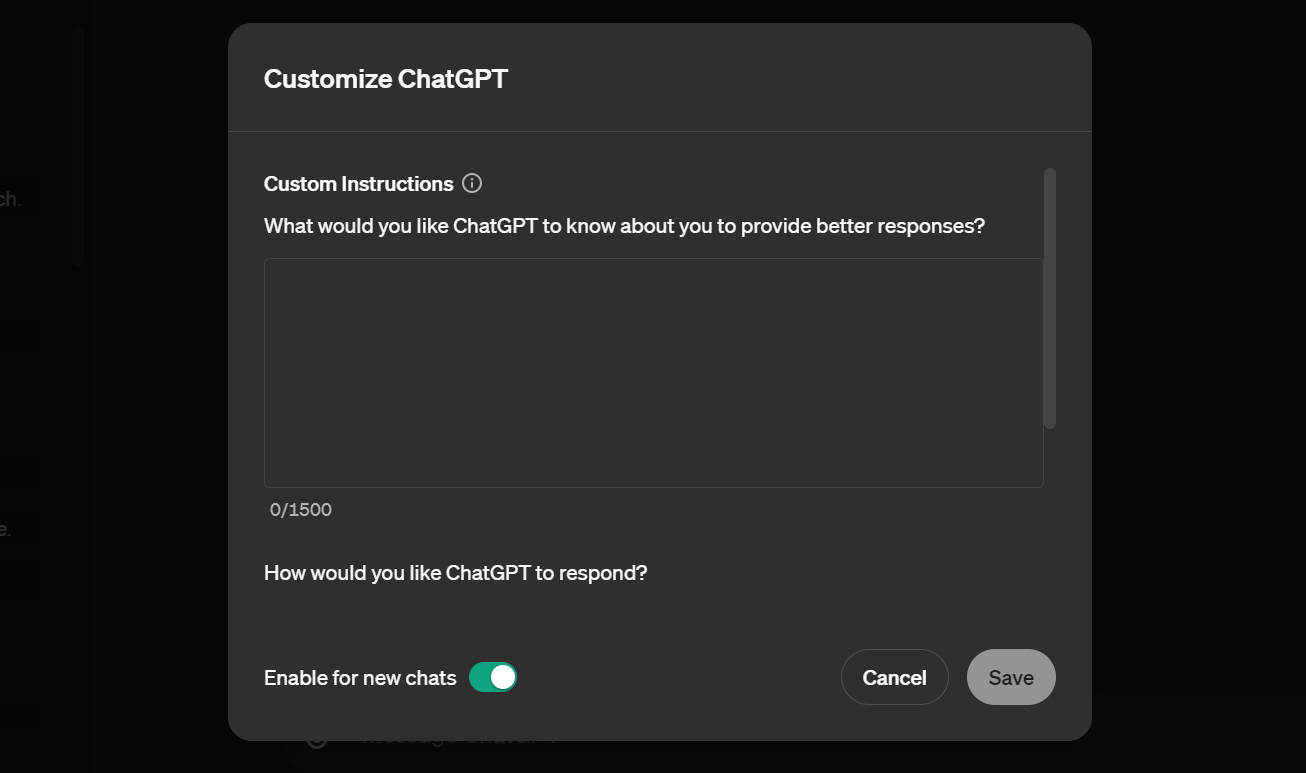
For ChatGPT users on paid tiers, you can build your own custom ChatGPT (called GPTs). They operate similarly to custom instructions, but with a few key differences: you can create multiple custom GPTs and upload knowledge sources to each one. This way, you can easily toggle between chatbots to get the right kind of AI-powered support for the occasion. You can also set up your GPT to perform actions outside ChatGPT.
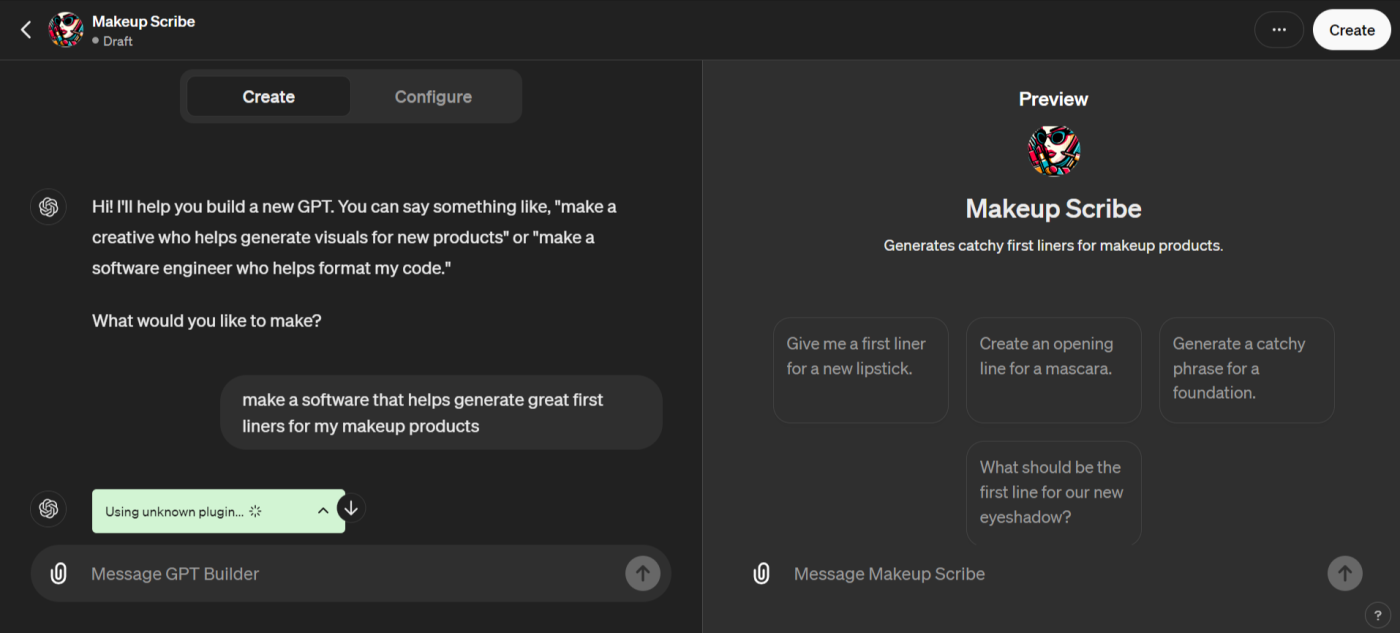
Building a GPT is straightforward—all you have to do is tell the GPT builder, in plain English, what you want to create, and the builder will take it from there. But again, it requires prompting skills and a great deal of creativity to get the results you want.
Jasper, for its part, allows you to upload knowledge sources, like style guides and user personas, and share website links to help train it on your writing style and brand voice. You can also upload multiple brand voices and toggle between them while generating content.
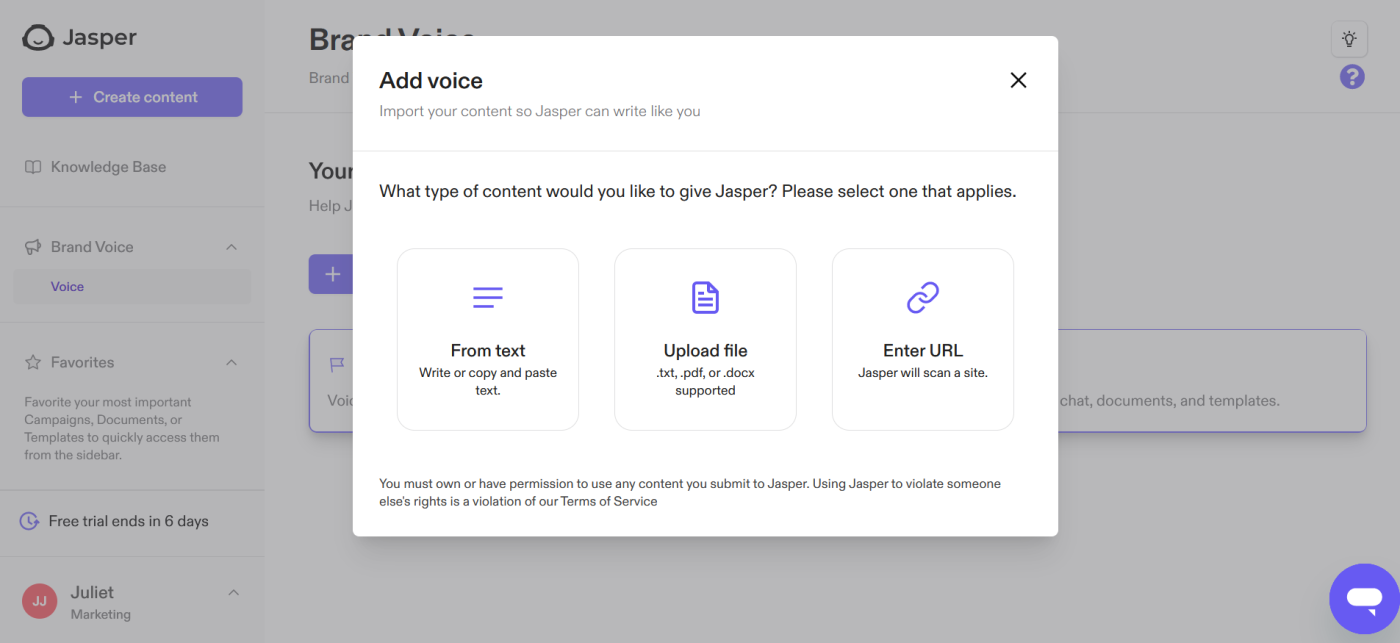
If all you want is to train your chatbot to write like you, either ChatGPT or Jasper will do the trick. But if you want to train your chatbot to perform specific functions—for example, analyze a spreadsheet of event survey results to generate ideas for your next webinar—ChatGPT is the way to go.
ChatGPT has more generalized functionality
Content marketing goes beyond writing emails, blog posts, and social media captions. You also have to create graphics to accompany your posts, share drafts with your team for review, run performance reports, and analyze how well your content is (or isn’t) performing—just to name a few.
ChatGPT can natively help with almost all of the above (for anything it can’t, there’s a Zapier integration for that). For example, using GPT-4o or the Data Analyst GPT, you can upload a spreadsheet of, say, last quarter’s email analytics and ask questions about it. You can even upload, say, a PDF of your guide to basic dog training and have ChatGPT convert it into a presentation for your next dog training webinar. You can also use GPT-4 (paid tiers only) or GPT-4o to generate AI images of your product in the wild (literally) to create a truly scroll-stopping social post. And this is just scratching the surface of all that you can do, beyond generating text, with ChatGPT alone.
Jasper can also generate AI images and analyze data. But in terms of data analysis, it’s hyper-focused on giving you only content-related insights.
Both Jasper and ChatGPT integrate with Zapier
One of Jasper’s core strengths is its ability to integrate with other tools that fit seamlessly into marketing workflows. For example, when you connect Surfer SEO to Jasper, you get ranking data for the article you’re writing, so you can keep search engine visibility in mind without hopping between tools. While Jasper itself doesn’t provide spell-checking, you can enable the Grammarly add-on for that.
ChatGPT, on the other hand, doesn’t allow for plugins—it used to, but that’s since been discontinued in favor of GPTs.
But because both Jasper and ChatGPT integrate with Zapier, you’ll be able to connect them with thousands of other tools too, so you can automate the rest of your workflows. Learn more about how to automate Jasper and how to automate ChatGPT, or get started with one of these pre-made templates.
Zapier is the leader in workflow automation—integrating with 6,000+ apps from partners like Google, Salesforce, and Microsoft. Use interfaces, data tables, and logic to build secure, automated systems for your business-critical workflows across your organization’s technology stack. Learn more.
ChatGPT is more affordable
If you’re looking for a free AI tool, ChatGPT is a good place to start—especially now that OpenAI is rolling out access to GPT-4o for all users. If you want to access advanced features like custom GPTs and advanced data analysis, you’ll have to upgrade to ChatGPT Plus. But at $20/month, it’s well worth the price point.
Jasper doesn’t offer a free plan. Instead, it offers a seven-day free trial with paid plans starting at $39/seat/month (billed annually). To access more advanced features like uploading knowledge sources and team collaboration—the ones that truly help you scale content production—you’ll need to pay for at least the Pro plan, which starts at $59/seat/month. And to access all features, you’ll need to contact their sales team for a custom Business plan quote.
Jasper AI vs. ChatGPT: Which should you use?
Jasper and ChatGPT are powerful tools in their own right—and either can assist you with your content creation workflows. Ultimately, your choice will depend on the kind of AI assistance you’re looking for. Here’s what it boils down to:
-
Jasper is the better option if you’re looking to generate marketing-specific content.
-
ChatGPT is the better option if you need a more generalized tool that’s flexible enough to handle varied tasks.
One thing I can’t emphasize enough, though, is that no matter which tool you use, you’ll need to spend time fine-tuning your prompting skills to get the best results.
Related reading: